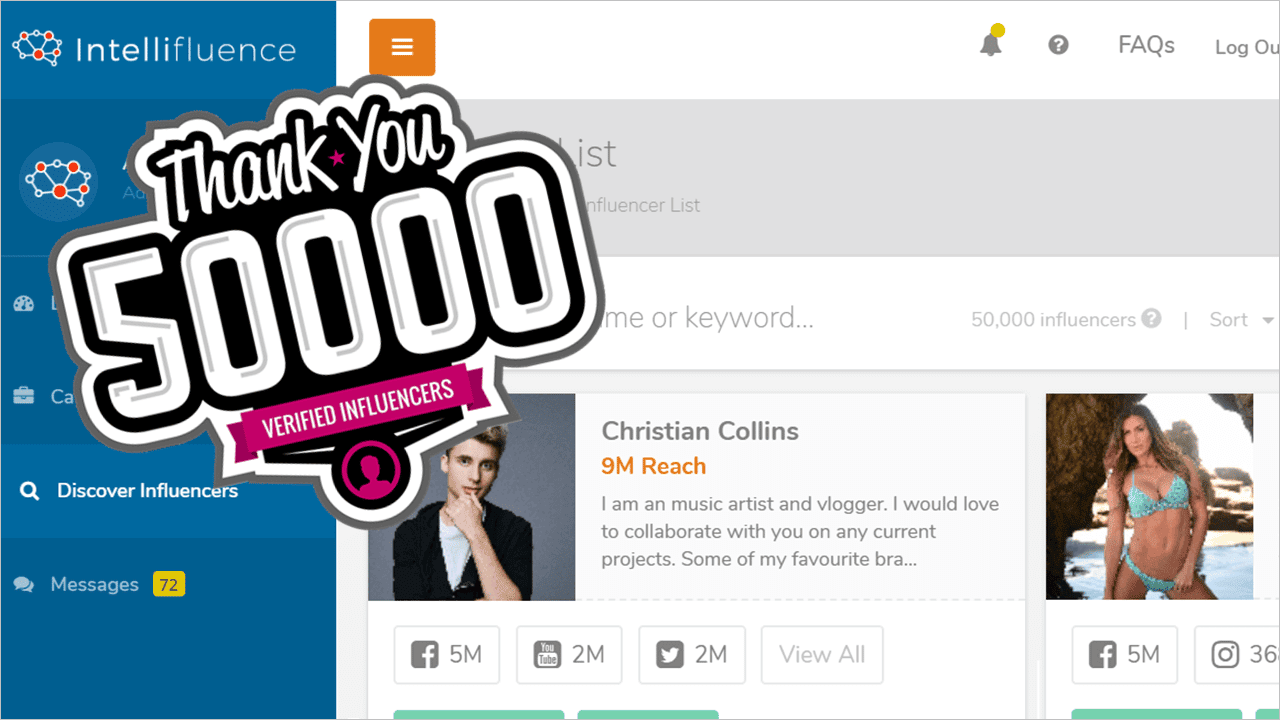Last Updated on June 8, 2020
You’re reading that right, by passing the 50,000-influencer threshold we believe Intellifluence is now the largest warm contact influencer network. There’s a lot of jargon in that sentence, so allow me to set the champagne glass aside and break it down.
Warm Contact Platforms and Networks
We’ve all seen the SaaS companies that are essentially a large databases of contacts which have never been verified. The majority of “influencers” that exist in such databases often don’t even know that they are on this list, haven’t been vetted for their interests, and as such your outreach to them is no different than any other cold email you might send. By contrast, warm contact platforms and networks have physically onboarded influencers that have applied in some manner that determines their interests and desires, so a contact to them is going to be more receptive over that cold contact.
Network vs Platform
Another distinction in the influencer market you may have noticed by now is the difference between full fledged networks and impassionate platforms. In a platform an influencer may have signed up to receive product, but has no contact with the brand, no real feedback to offer, and no ability to negotiate or otherwise interact — I consider these as impassionate because it’s often a simple queue/matching service that attempts to fulfill brand quotas in a way that biases towards quantity vs quality. Networks, however, provide a community sense wherein brands can interact with influencers (and vice versa); in our case, the interaction is stronger post-pitch, to eliminate as much noise as possible while still providing for the myriad of use cases the influencer market has created over the years.
SaaS vs Agency
One of the other interesting dynamics of the influencer market is the difference between SaaS and companies that look like a SaaS but are actually agencies in disguise. I do not wish to slight influencer agencies, as there are many great services the top tier agencies offer; however, I think it is a bit dishonest for some of these agencies to pretend to be a SaaS network when it is in fact manual agency labor on the backend acting as intermediaries for brands and influencers. This is usually apparent when looking at a company’s fee structure — if the software looks overly complex and old with a strong upsell to a managed service, this is often an agency in disguise that does so at the behest of venture investors.
Biggest?
Yes. Intellifluence is now the biggest warm contact influencer network; when we started nearly 3 years ago we were aware of a handful of non-agency competitors, saw that balloon to 300+, and over time the new market entrants seem to come in at the same rate as market exits. As we look at the list of companies that Intellifluence is proud to now lead, we unfortunately see some companies inflating their numbers to look more impressive — please stop. Sometimes this occurs by multi-counting an influencer for providing multiple network profiles, and sometimes it is simply fictional. If I can make an appeal to be heard by those engaged in this, just focus on real growth and product feature set; everyone starts somewhere and given the sheer size of the industry, there can be room for you.
Is bigger any better? As a network, yes. Drawing upon my former career in information systems, I look to Metcalfe’s law which roughly states the value of a network is equal to the square of the nodes on the network. For every 1,000 influencers we onboard we can trace a slight churn reduction as brands continually find more qualified individuals for their specific needs. It took 3 years of bootstrapping a team of under 10 people to get here and we know we have a very long road ahead of us to realize our dream of creating a network that encompasses the planet, where anyone can provide influence to anyone else; next step is 100,000 influencers and I hope you’ll be there to celebrate with us.

Joe, CEO and Co-Founder of Intellifluence, has over 25 years of experience in SEO, leading several successful marketing companies and providing expert consultation. He is the author of The Ultimate Guide to Using Influencer Marketing, which is available as an eBook or in print.






